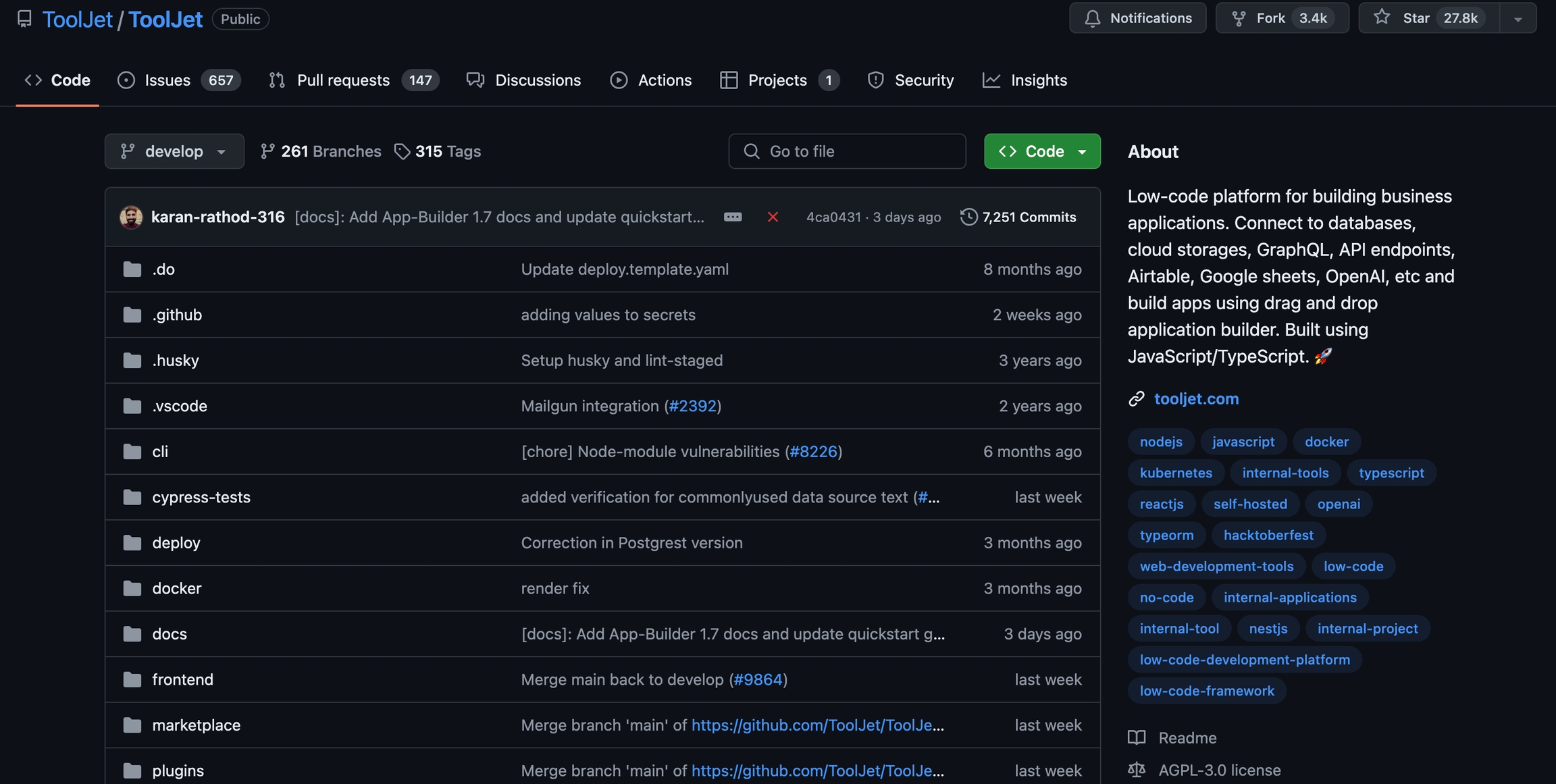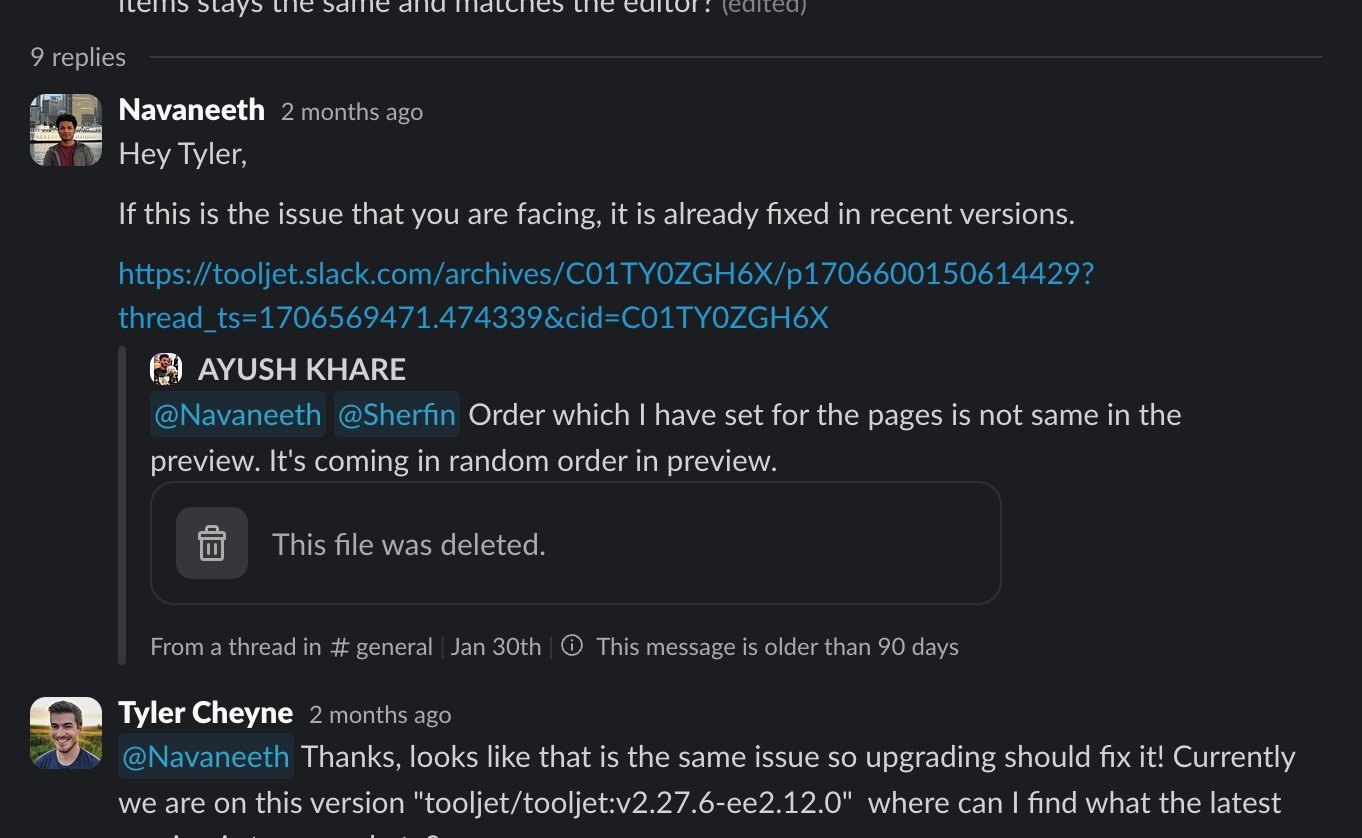🌎Open Source as a GTM channel
Do you have any questions, need personalized guidance, or want to share your journey in this playbook? We'd love to talk to you. Reach out to us.
Open Source as a GTM Channel involves prioritizing adoption and usage of open-source projects to build a large, engaged user base before focusing on monetization.
Open-source software (OSS) offers several benefits such as reduced initial costs, quicker project initiation, accelerated iteration, adaptable software development processes, strong community-driven support, and simplified license management, all without the constraints of being tied to a single vendor through contracts.
Open-Source Software Benefits for Developers
While it's arguable that OSS projects might lack the user-friendliness of commercial products crafted by professional UX designers, individual developers enjoy numerous advantages:
Quicker Starts: Utilizing pre-built infrastructure allows for bypassing the need to start from scratch, without enduring lengthy sales cycles typical of proprietary products. Mature open-source projects come with well-developed foundations, documentation, and communities.
Faster, More-Transparent Development: Unlike closed-source software, open-source projects offer visibility into the code base, enabling developers to code their solutions and address issues directly within community spaces. This fosters rapid responses and diverse insights from the community.
Better, Community-Based Collaboration: Developers can collaborate with a diverse community, sharing experiences and solutions to common issues.
Scalability: Various OSS projects offer flexible configurations for hosting and load balancing, facilitating scalability according to data usage needs.
Community-Driven Security: Open-source communities often provide robust security, with extensive testing and contributions from security experts. However, ongoing security may require dedicated resources unless maintained by designated teams.
Community-Driven Reliability: Mature open-source projects can offer high reliability due to extensive community contributions and issue resolutions.
Low Cost Up Front: Most open-source projects are free, though specific licensing restrictions may apply. Permissive licenses like BSD allow freedom for developers, while copyleft licenses like GPL ensure code availability under specific terms.
Low Cost on an Ongoing Basis: Depending on the license, ongoing use of open-source products can entail lower or no maintenance fees compared to proprietary counterparts, which often involve upfront and subscription costs.
Important Milestones for OSS Startups
As an OSS founder, ensuring completion of these crucial milestones is imperative:
Scope Roadmap, Landscape, and Value Prop: Define the problem your OSS startup addresses, its unique value proposition, and how it stands out from competitors. Develop a roadmap with timelines, deliverables, and responsible parties.
Messaging, Positioning, and Branding: Craft foundational messaging and branding to effectively communicate your value proposition and differentiate your project from others.
Determine Licensing and Legal Requirements: Review licensing implications and understand obligations, including privacy policies and potential trademarking needs.
Determine Community and Governance Roles: Plan roles for co-founders, team members, and community contributors. Establish community conduct policies to foster a healthy environment.
Scope and Build Infrastructure: Establish essential tools like code repositories, testing frameworks, documentation systems, and community collaboration platforms.
Set Roadmap, Metrics, and Goals: Define key metrics for community growth, product engagement, onboarding, and publicity to track progress effectively.
Raise Funding: Explore funding options, including traditional investors, crowdfunding, or support from institutions. Seek experienced investors with a proven track record in funding OSS startups.
Building a Bridge to Open-Source Business Models
Depending on your objectives as a founder and your OSS licensing situation, you have various options for transitioning from a purely open-source project to a revenue-generating commercial endeavor. Here are four successful open-source business models:
Sure, here's a breakdown of each of the mentioned models:
Professional Services (ProServ):
The ProServ model involves offering paid professional services alongside an open-source product. These services may include consulting, training, customization, implementation, and support.
Pros: Potential for significant recurring revenue, particularly from larger enterprise clients who require specialized assistance.
Cons: Can be labor-intensive and time-consuming, as each service may require tailored solutions. Enrolling a substantial number of users can also be challenging.
Open Core:
The Open Core model combines an open-source core with additional proprietary features offered in paid commercial versions. The core features are available for free, while advanced functionalities are monetized.
Pros: Provides flexibility in licensing, allowing users to access basic features for free and offering premium features for a fee. This model also simplifies the differentiation between paid and free users.
Cons: Maintaining separate codebases for the open-source core and commercial features can increase maintenance overhead. Balancing the development and marketing of core vs. commercial offerings can also be complex.
SaaS (Software as a Service):
In the SaaS model, the software is hosted centrally, and users access it over the internet. Customers typically pay a subscription fee to access the software, which is managed and maintained by the provider.
Pros: Provides control over infrastructure, enabling easier management of setup, maintenance, and upgrades. Offers strong potential for recurring revenue through subscription contracts.
Cons: Involves the burden of managing infrastructure, including potential issues with downtime or outages. May also face challenges related to vendor lock-in and concerns from the community about reliance on proprietary services.
Each model has its advantages and challenges, so it's crucial to assess your goals and licensing situation carefully before deciding on a strategy for monetizing your OSS startup.
Creating Authentic Value: Open Source and Open Core as go to market strategies
Open Source brings valuable benefits when shaping the strategy to introduce a developer tool to the market. It involves sharing source code under a license that allows users to freely use, modify, and share the software, encouraging collaboration within the developer community. Its decentralized nature and fast development cycles have made it a popular choice for quickly reaching a wide audience.
There's a common misunderstanding that open-source tools are developed by many contributors, but that's often not the case. However, this misconception helps in gaining rapid adoption.
However, rapid adoption comes with a significant drawback: once released as truly Open Source, the project is no longer owned by the creator, making it challenging to monetize without a fully-fledged enterprise version.
An alternative approach is the "Open Core" model, which is a progression of the Open Source strategy. This model offers a basic version of the product as open source with limited features, typically for free.
The Open Core model maintains the advantages of Open Source, encouraging a network effect among users and facilitating a transition from a sales-driven to a marketing-oriented approach. It also fosters community involvement in shaping the product's direction and helps attract talent.
Under this model, users can purchase premium commercial add-ons that are proprietary, providing opportunities for revenue growth. However, its success depends on delivering substantial value through enterprise features, as users may stick to the free version otherwise or quickly move away.
Opensource
Developer
Developer
Build, deploy, launch
Individuals, Small company
Open Source, Open Core, Traditional B2B
Developer
Higher ups
Collaboration, infrastructure level
Small, Mid market
Traditional B2B
Higher ups
Higher ups
All
Upper midmarket, Enterprise
Some early challenges with building an Open Source company
Balancing Community and Enterprise Needs: Striking a balance between serving the needs of an open-source community and catering to the complex requirements of enterprise customers can be challenging.
Monetization Strategy: Finding the right balance between offering value to users for free and encouraging upgrades to premium features can be tricky. Continually evaluating the pricing model and adjusting it based on market dynamics and user feedback is essential.
Example : Tooljet
The Importance of Open Source
For developers, open source represents freedom, flexibility, and the opportunity to contribute to something meaningful. This is particularly important because developers, by nature, are problem solvers who thrive in environments where they can experiment, innovate, and share their knowledge.
"Open source is about more than just sharing code. It's about building trust and allowing our users to contribute to something bigger than themselves." - Navaneeth, Founder of Tooljet

Understanding Developers and Their Traits
Developers are inherently curious and always on the lookout for tools that can make their work more efficient and enjoyable. They appreciate products that are well-documented, easy to use, and backed by a strong community. Developers also value transparency and the ability to customize tools to fit their specific needs. This makes them particularly receptive to open-source solutions, where they can directly influence the development of the tools they use.
"Developers are not just users; they are contributors and problem solvers. They want tools that they can trust and modify to suit their unique needs."
Building a community
Initially, Tooljet focused on building a strong presence on GitHub. The team encouraged developers to contribute to the project by reporting issues, suggesting features, and submitting pull requests. This early engagement was crucial in shaping the product based on real user feedback.
"Our early adopters on GitHub played a significant role in shaping Tooljet. Their feedback and contributions helped us improve and adapt the tool to meet real-world needs."

Navaneeth and his team knew they needed to expand their reach to build a more interactive and engaged community. They identified the need for a dedicated space where users could communicate more directly and in real-time.
"GitHub was great for code collaboration, but we wanted a space where our users could interact more directly with us and each other. That's when we decided to create our Slack community."
Tooljet’s Slack community was established to foster direct interaction between the team and its users. Slack provided a platform for real-time support, discussions, and collaboration. It became a space where users could share their experiences, ask for help, and connect with other developers using Tooljet.
"Our Slack community has been a game-changer. It allows us to provide immediate support, gather feedback, and build a sense of community among our users."
Lowering Barriers to Adoption
Open-sourcing their software lowered barriers to adoption for developers and small teams. Developers can explore and experiment with Tooljet without any upfront costs, making it easier for them to incorporate the platform into their workflows. This freemium model drives widespread adoption and serves as the foundation for Tooljet's sales strategy.
Community is where the Sales process starts
"Our open-source model helps us build a strong community of users who are passionate about the tool. This community-driven growth is the first step in our sales strategy."
Freemium to Premium
Tooljet initially offered two different editions: a free community version and a paid enterprise edition. Recognizing the potential to streamline user experience and conversion, Tooljet combined both editions into a single distribution. This approach allows users to experience premium features and seamlessly transition to the paid version when they need additional capabilities.
Targeting Enterprise Customers
While the community version drives widespread adoption, Tooljet’s enterprise strategy focuses on larger organizations that require advanced features and dedicated support. Features such as user management, enhanced security, and compliance tools are often critical for these customers.
Direct Sales and Account Management
Tooljet emphasizes a self-service model where users can easily upgrade to a paid version without needing extensive sales interactions. But for larger enterprise deals, Tooljet employs a direct sales approach. This involves a dedicated sales team that engages with potential clients to understand their needs, demonstrate the value of Tooljet, and negotiate contracts. Account managers play a crucial role in maintaining relationships with these clients, ensuring their ongoing satisfaction and renewal.
Additional resources:
Was this helpful?